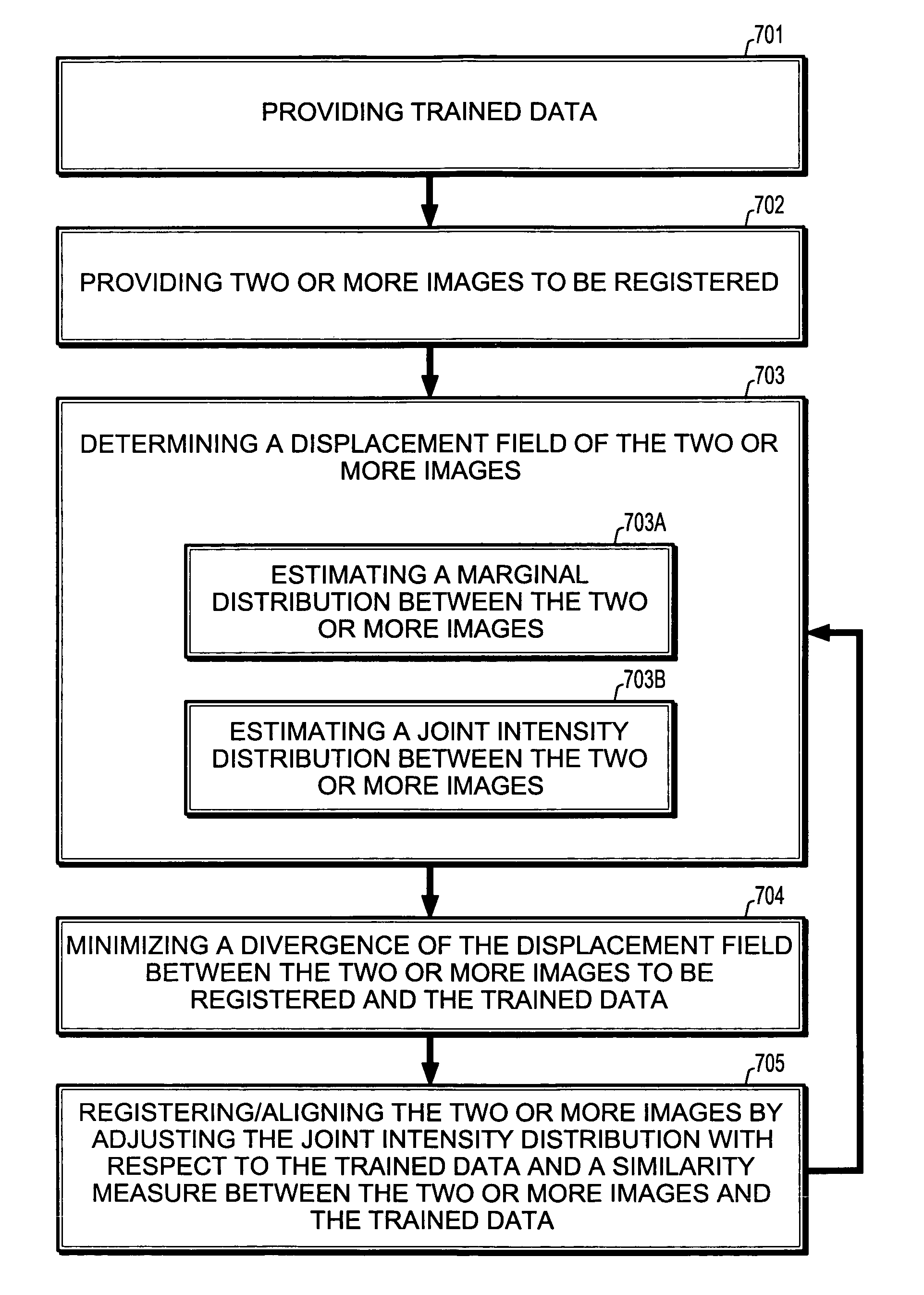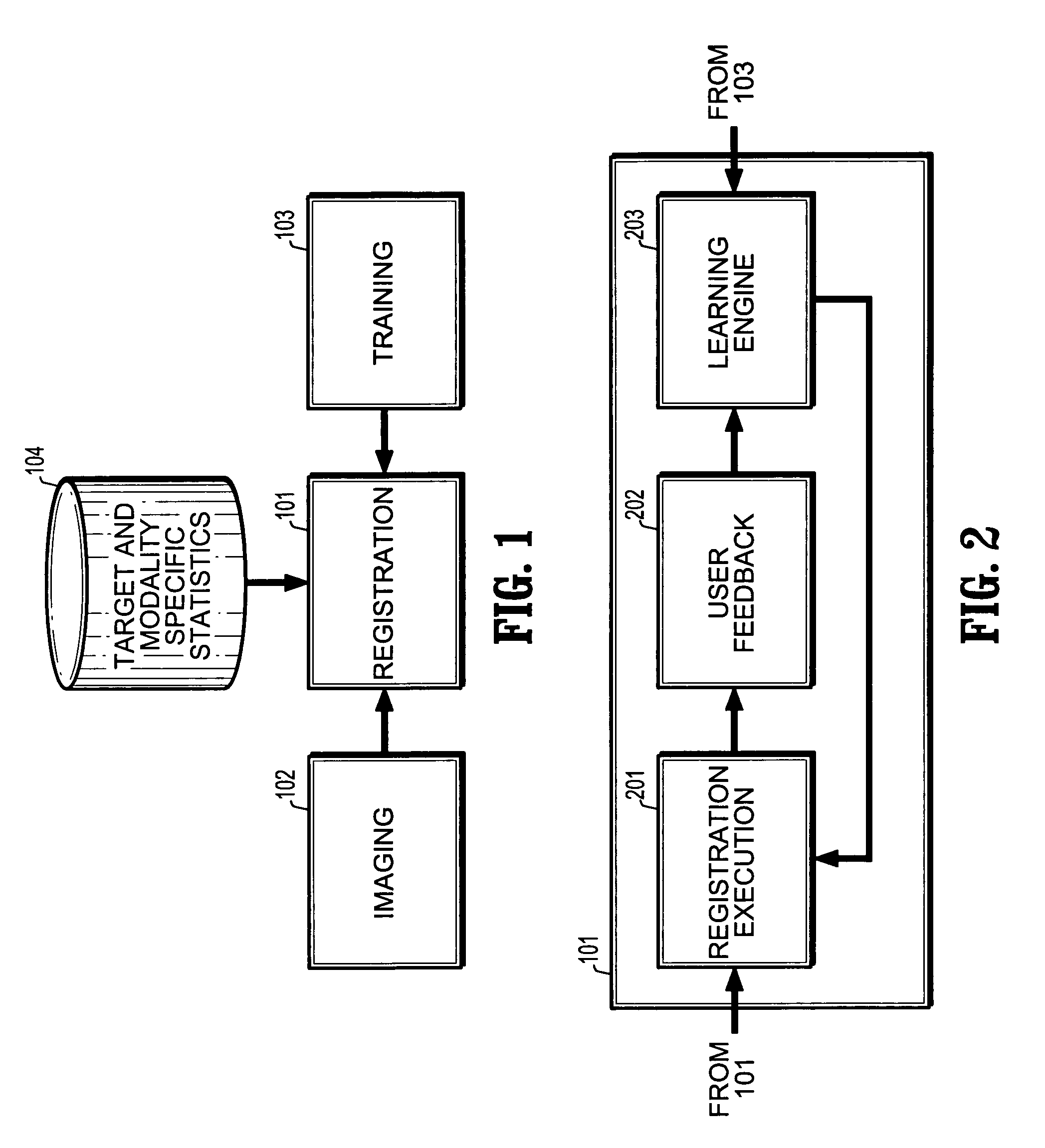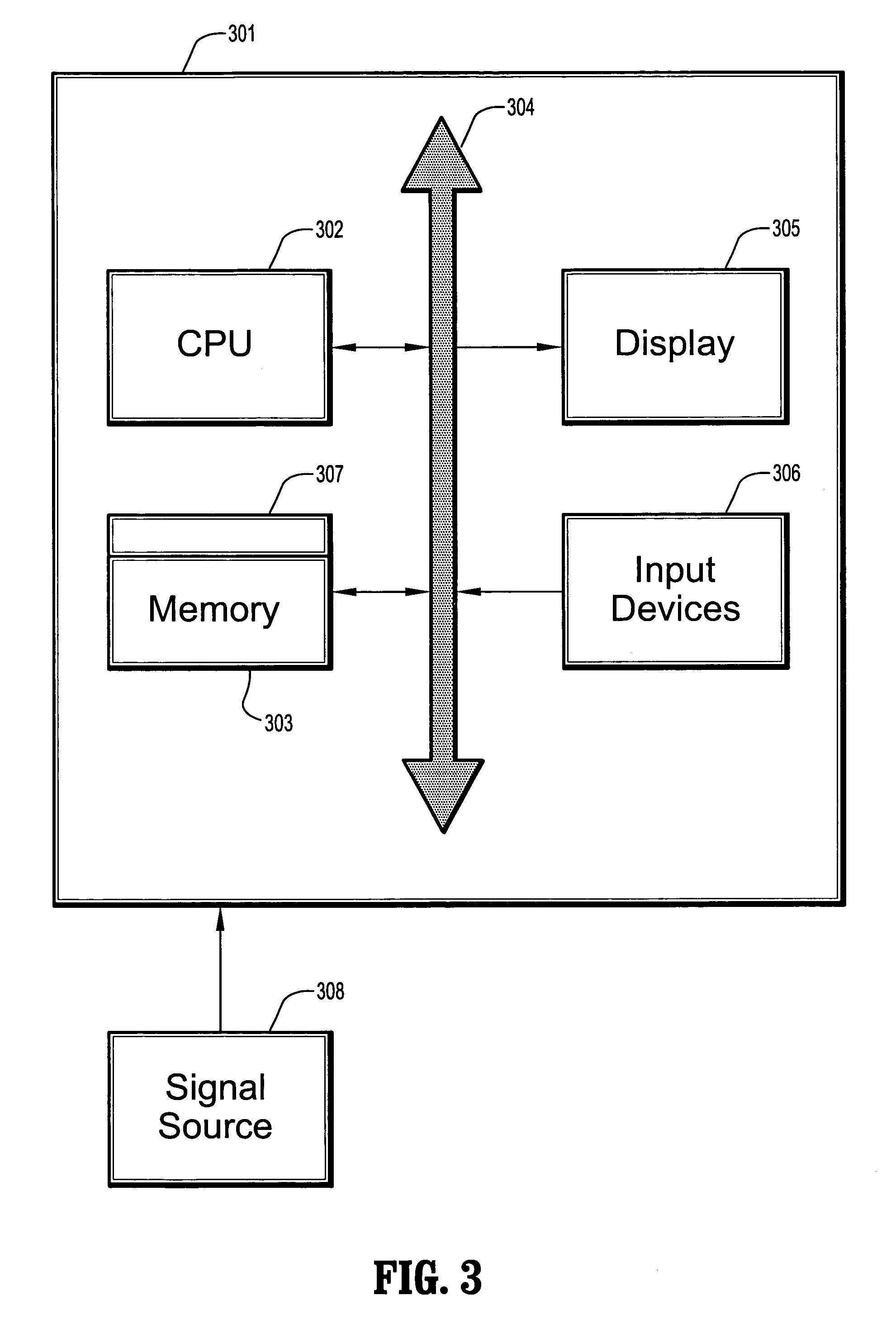Non-rigid multi-modal registration using statistical learning methods
a statistical learning and non-rigid technology, applied in image analysis, image enhancement, instruments, etc., can solve the problems of mis-registration or convergence to a local extremum, the ill-posedness of the energy functional and/or the size of the parameter space are still problematic, and the problem of affecting the accuracy of the imag
- Summary
- Abstract
- Description
- Claims
- Application Information
AI Technical Summary
Benefits of technology
Problems solved by technology
Method used
Image
Examples
Embodiment Construction
[0027]A method for non-rigid multi-modal image registration implements a-priori knowledge. A-priori knowledge is gained from registered images that are used to statistically learn probability distributions prior to a registration being performed on images of interest. Unregistered images are aligned by a non-rigid registration method making use of the trained knowledge.
[0028]Referring to FIG. 1, a system for multi-modal registration includes a registration component, an imaging component, a training component, and optionally, a database of target and modality specific statistics. The registration component 101 receives at least two unregistered images captured using different modalities, e.g., single photon emission CT (SPECT) / Computed Tomography (CT), positron emission tomography (PET) / CT, or T1-T2 MR images. The unregistered images are supplied by an imaging component 102, for example, imaging hardware / software. The registration component 101 uses context information of shapes in ...
PUM
 Login to View More
Login to View More Abstract
Description
Claims
Application Information
 Login to View More
Login to View More - R&D
- Intellectual Property
- Life Sciences
- Materials
- Tech Scout
- Unparalleled Data Quality
- Higher Quality Content
- 60% Fewer Hallucinations
Browse by: Latest US Patents, China's latest patents, Technical Efficacy Thesaurus, Application Domain, Technology Topic, Popular Technical Reports.
© 2025 PatSnap. All rights reserved.Legal|Privacy policy|Modern Slavery Act Transparency Statement|Sitemap|About US| Contact US: help@patsnap.com



